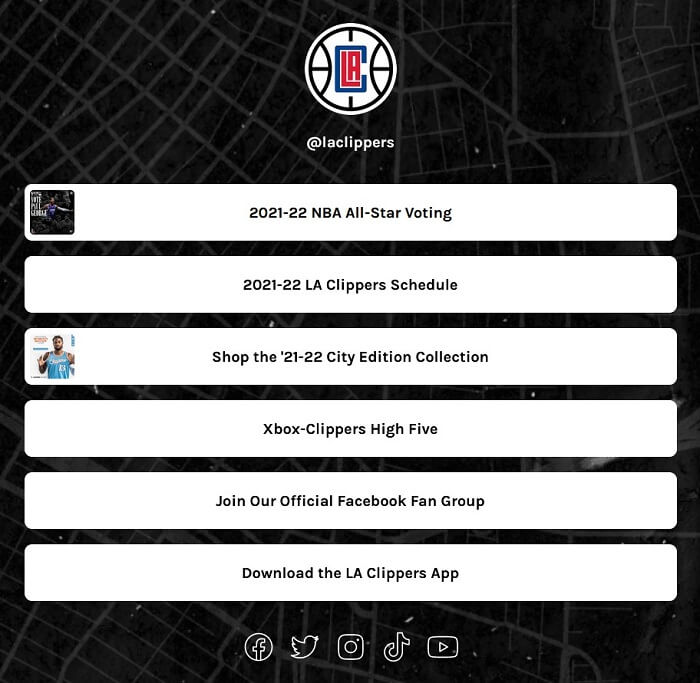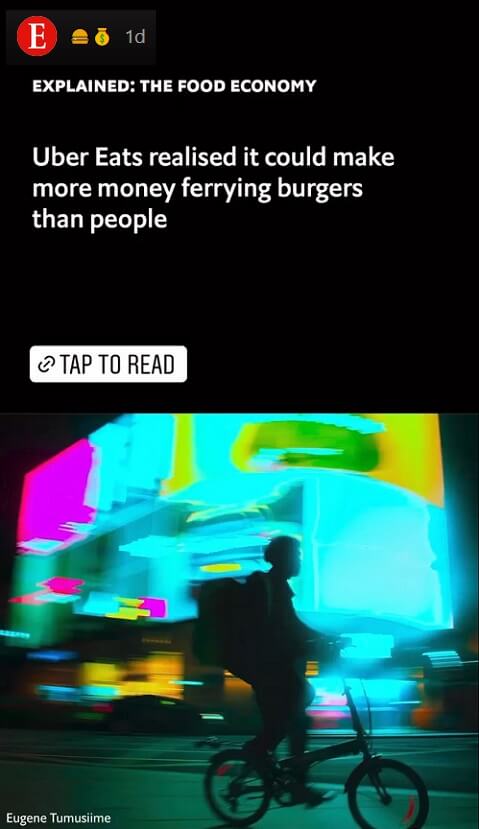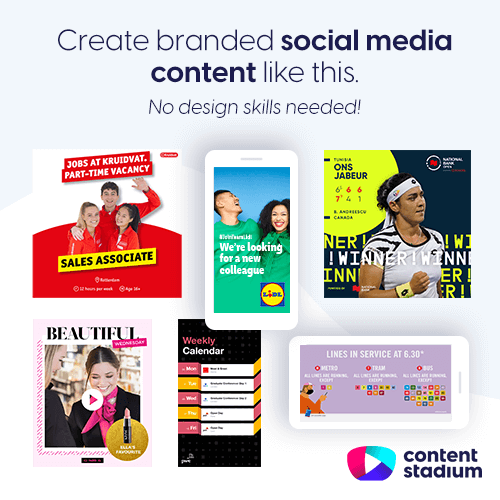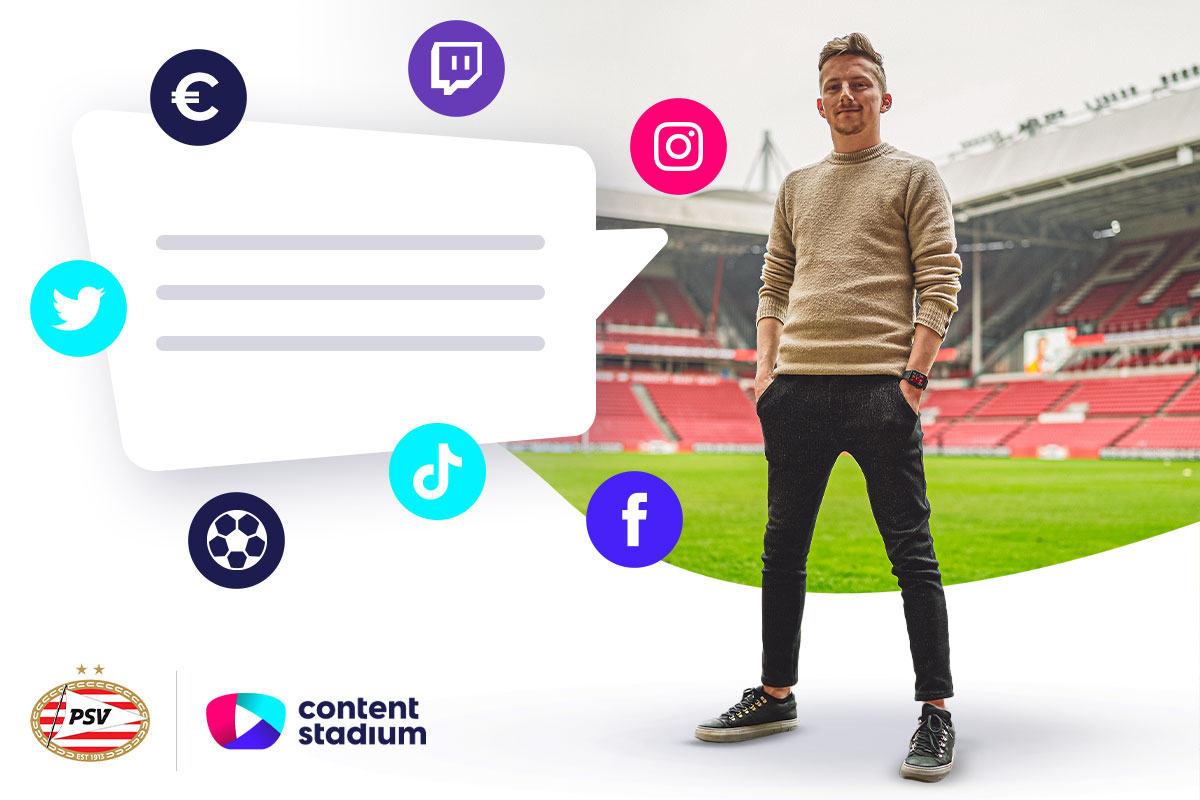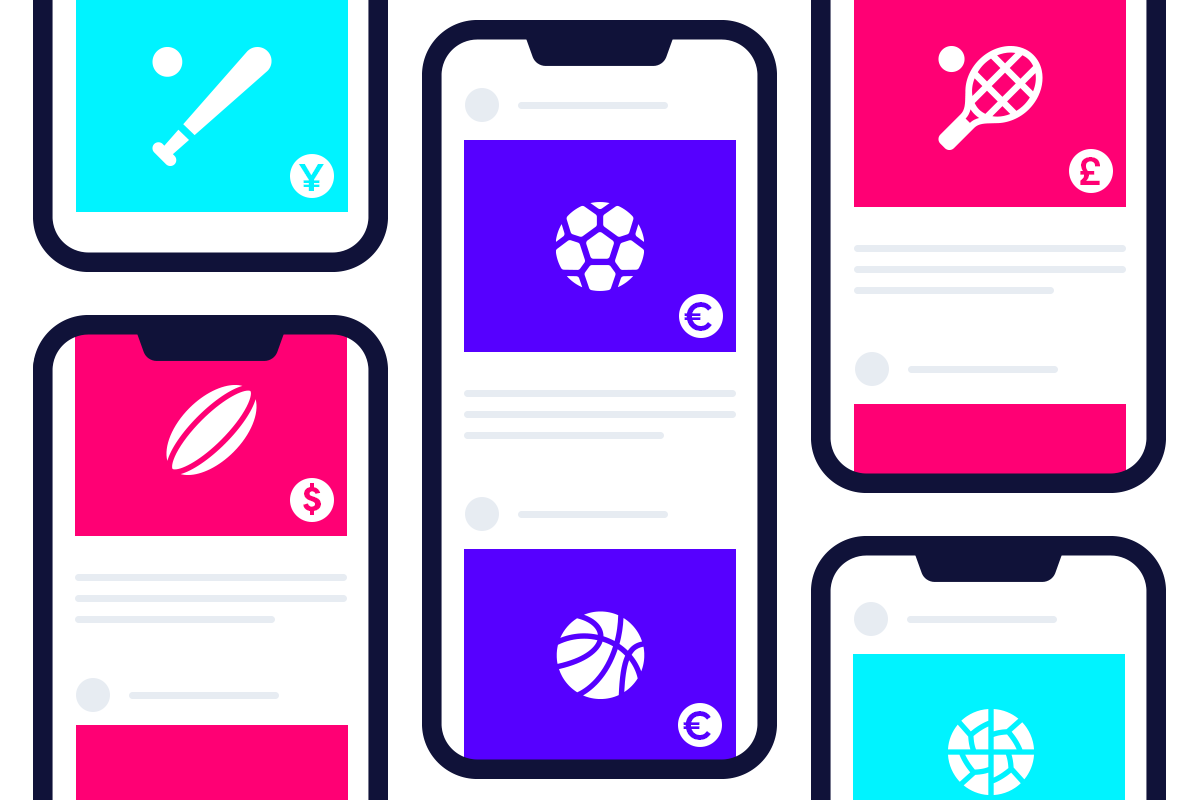Want to increase the traffic that comes to your website via your social media channels?
Take a look below for some ideas, best practices and examples from our experts, as well as research data and specialist interviews. These should help you increase click-throughs and improve your social media referral metrics.
Looking for more social media tips? Check out how to create content faster and how to keep your posts on-brand.
Tips to increase website traffic from social media
- Start with the basics: Increase reach and engagement
- Focus on the social media platforms that drive the most web traffic
- Include referral links on your social media profiles
- Add links to your posts
- Review your post frequency strategy to maximize traffic
- Share links in social media groups
- Use content techniques that encourage click-throughs
- Increase traffic through social media shares
Tip 1. Start with the basics: Drive traffic by increasing reach and engagement
Any strategy that helps you increase your social media reach, engagement and number of (quality) followers will also help get more eyes on your posts and profile, and grow brand familiarity. This should then naturally increase your social media referral traffic.
For example, in a 2022 study, Social Media Today tested whether memes — which are know to drive engagement, and in turn reach on social media — could also help increase website traffic. After integrating memes into their social media strategy for 1 month, they saw a 12% increase in website sessions, and 16% increase in website users from social media. While this was only a small test, it suggests that engaging content can also increase website visits.
How're them Facebook stats looking? pic.twitter.com/2cr8YwzQUY
— Social Media Today (@socialmedia2day) October 17, 2022
So, our very first tip is to make sure you’re already following general social media best practices to increase reach and engagement. From posting regularly and interacting with your followers, to creating timely content with eye-catching visuals, apply the best practices that are most relevant to your brand and audience to increase your social media metrics.
But in addition to general social media best practices, there are plenty of tactics you can use to specifically drive traffic to your website through social media. Let’s dive into these.
Tip 2. Focus on the social media platforms that drive the most web traffic
If your goal is to increase your traffic from social media, a good place to start is by choosing the best-suited social media platform(s) for the job. So which is the best social media platform to drive traffic to your website?
According to Search Engine Journal, GrowthBadger and The Economist’s findings, Facebook is the best platform for social media referrals. This isn’t surprising, when Facebook remains the most popular social media network. But Twitter can also be hugely influential when Tweets go viral, which can lead to high volumes of traffic.
Meanwhile, the research found that Instagram and Pinterest are some of the social media networks that drive the least traffic to external websites. However, the data varies widely per industry, so understanding the best social media channel for your brand and audience is also key to driving the most traffic to your website.
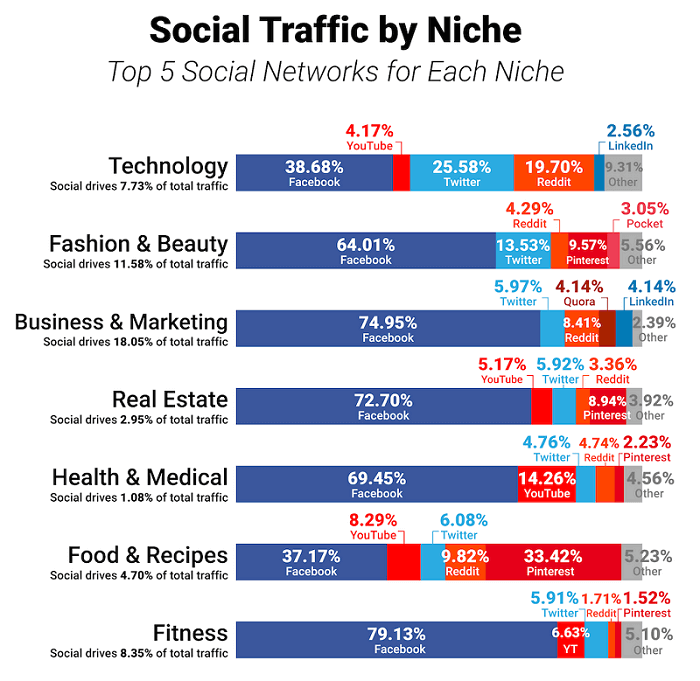
Tip 3. Include referral links on your social media profiles
Every social media profile has a small area reserved to presenting yourself to your followers. Whether it’s called a “bio” (on Twitter, TikTok or Instagram) or an “about section” (on LinkedIn, Facebook or YouTube). Here you can include link(s) to your website. This way users know where to go if they want to see more from you, helping you easily direct this traffic from social media to your website.
Often, you can put more than one link in your bio. This offers your followers a greater variety of options, helping them find what’s relevant to them and reducing any friction in their journey to find out more information.
However, this is not possible on all social media platforms. For example, some only allow you to add 1 or another limited number of links. A solution to this problem can be to link to a dedicated landing page, where you can list several useful links. This service is offered by platforms such as Linktree, Later’s Linkin.bio and Taplink. Or you can simply create your own landing page on your website.
Get inspired by these examples from Comedy Central, Leo Burnett, NLF, Lidl, LA Clippers (Linktree), The Economist and SPORT1 (Likin.bio, which recreates the feed with clickable links), and BRR Digital (website landing page).
Tip 4. Add links to your social media posts to drive traffic
In addition to your profile, every social media post can be turned into an opportunity to drive traffic to your website. If a user is interested enough to be reading and viewing your content already, make sure to let them know where they can see more while you have their attention. End your post with a CTA (call to action) and a link to where they can get more info.
Each platform gives you the opportunity to add a link to your post. But they do it in different ways. So, let’s review some of the options to add links in your social media posts. (Note that this changes often as platforms tweak their features: be sure to review all the latest possibilities with your preferred platforms).
- YouTube: You can add links to the caption of your videos, through pop-ups during the video and on video end screens.
- Instagram: You can create link stickers in your Instagram Stories. And while you can’t add clickable links to your feed posts and Reels (unless you link to your Instagram shop with product tags), you can encourage your followers to go to the link in your bio to see more.
- Twitter: Adding links in your tweets will create an automated link preview. Be sure to also make use of Twitter carousels and cards: these include one or multiple images which, when clicked, redirect the user to an external webpage or app download page.
- LinkedIn: You can put the link directly in the caption, which will automatically generate a link preview with a clickable image. You can then delete the link from the caption, leaving only the link preview, to keep your posts neat and tidy.
- Facebook: The same function present on LinkedIn can also be found here. In addition, you can include links in your Facebook Stories.
- Snapchat: Stories here are also an easy way to share a link with your followers.
- TikTok: Unless you pay for ads, you cannot add clickable links to your videos. The only possibility is to put a link in your bio and redirect people there.
Energetic resonance. The Twist’s name stems from the unique clasp, whose pivoting L and V come together to form a V in reference to the founder’s initials. #LVTwist
— Louis Vuitton (@LouisVuitton) March 12, 2022
Tip 5. Review your post frequency strategy to maximize website traffic
Understanding the different social media algorithms and how they work is also essential to driving more people from socials to your website. The frequency of your posts can either help or harm you when it comes to getting your content in front of your audience — depending on which platform you’re using.
Kevin Young, the Head of Audience at The Economist, explained how he and his team customized their approach to work with the different platforms’ algorithms and increase social media traffic to the website:
- Twitter: Because users tend to dip in and out of Twitter across the day, you can post your top articles (your “greatest hits”) on rotation multiple times per day. This ensures people see a lot of high-quality content whenever they tune in.
- Facebook: The algorithm doesn’t like you to post the same articles multiple times a day. So here it’s best to only publish a smaller number of top-quality posts.
- Instagram: Instagram is best used as a shop window for your visual content, and The Economist posts on average 8 times per day on this platform. But the link-in-bio strategy can still drive significant traffic to your website. In fact, The Economist’s Head of Social Media later revealed that their link in bio feature has driven “several million referrals to our website and a marked uplift in subscriptions and registrations.”
- LinkedIn: The Economist adopted a conversation-based strategy for LinkedIn, encouraging comments and shares. This means that they can post less (around 8 times per day), but still have high levels of social media referrals.
Watch the full interview for all of Kevin Young’s insights and results:
Tip 6. Share links in social media groups
Leverage social media groups to drive traffic to your website. Seek out the people most likely to be interested in your content and click on your links by sharing your content in groups dedicated to your field.
Social media platforms that offer group features include Facebook, WhatsApp and LinkedIn.
Tip 7. Use content techniques that encourage click-throughs
How you present your social media visuals and the text you use in your captions can also help increase your social media referrals. Find a way to pique your audience’s curiosity and leave them wanting more. Here are a few techniques you can use:
- Create a hook: Hook your audience with something interesting to get them invested, such as an intriguing headline or the first part of a story. Then let them know that they can find out more on your website.
- Appeal to their FOMO: You can rely on people’s fear of missing out (FOMO) by underlining how indispensable it is for them to find out more (on your website), and how they don’t want to be the last ones to know.
- Use emotions: Emotional messages or provocative images can appeal to your audience’s emotions, leading them to be emotionally involved and wanting to continue engaging with your content.
- Try using negative language. Research found that including negative words in headlines increases click-through rates by 2.3% per additional negative word.
- Add a CTA: A simple and effective way to encourage social media followers to check out your website is to simply tell them to do so. Add a short and clear call-to-action (CTA) with the link to your webpage in your posts.
Whenever you use the above techniques, be sure to always deliver on what you promised in your post when users click through. And steer clear of misleading or sensationalized clickbait headlines that lead to low-quality webpages. While clickbait strategies might help you drive more traffic in the short term, in the long run, people will be less likely to click through, fearing that they might be disappointed again. In addition, research found that, while clickbait headlines might increase clicks, users tend to like and share the content less.
Our new holiday collection may surprise you.👀Click to read more on @voguemagazine now!https://t.co/NyXPWDyvwP
— H&M USA (@hmusa) November 16, 2021
As many countries lament the loss of tourists, this Caribbean nation is attracting more than ever — even compared with before the pandemic. But some residents are uneasy.
Posted by The New York Times on 2022 m. sausio 30 d., sekmadienis
Tip 8. Increase web traffic through social media shares
Another tip to drive referral traffic from social media is to encourage people to share your links with their own networks. As we tend to trust the opinions and recommendations of those who are close to us, there’s no better publicity than someone sharing your company’s post on their own feed.
To encourage this behavior, you can create content that naturally encourages sharing, such as striking images or engaging topics. Or you can simply ask your followers to share your content.
Mind-blowing tennis from Rafa Nadal 🤯
Posted by Eurosport on 2022 m. sausio 30 d., sekmadienis
An emotional Angelina Jolie appeared on Capitol Hill to join senators in announcing they've found a path forward on reauthorization of the Violence Against Women Act. https://t.co/oDM6ss6JFV pic.twitter.com/IRYqlkpNe3
— ABC News (@ABC) February 10, 2022
Step up your social media strategy with more tips and ideas
- Check out these Twitter carousel examples, and what makes them work.
- Discover 6 ways to create social media content faster.
- Learn how sports media website Sporting Life uses our templates to step up their social media visuals and increase traffic to their website:


With Content Stadium, everyone on the team can create quality, eye-catching graphics quickly and effortlessly. […] The traffic and social media engagement it’s helped us achieve has been immense.
Chris Hammer | Social Media Manager at Sporting Life. Read his story >

